Ultimate Dog Training Commands List
Ultimate Dog Training Commands List
What Are Dog Commands?
A command is a message that you relay to your dog to elicit a desired behavior. Dog commands are a way of communicating your desire to the dog.
Dog training commands run the gamut of the most basic (no) to the simple but essential (sit) to the advanced and whimsical (riding a skateboard). In general, the most advanced dog commands are “dog tricks.”
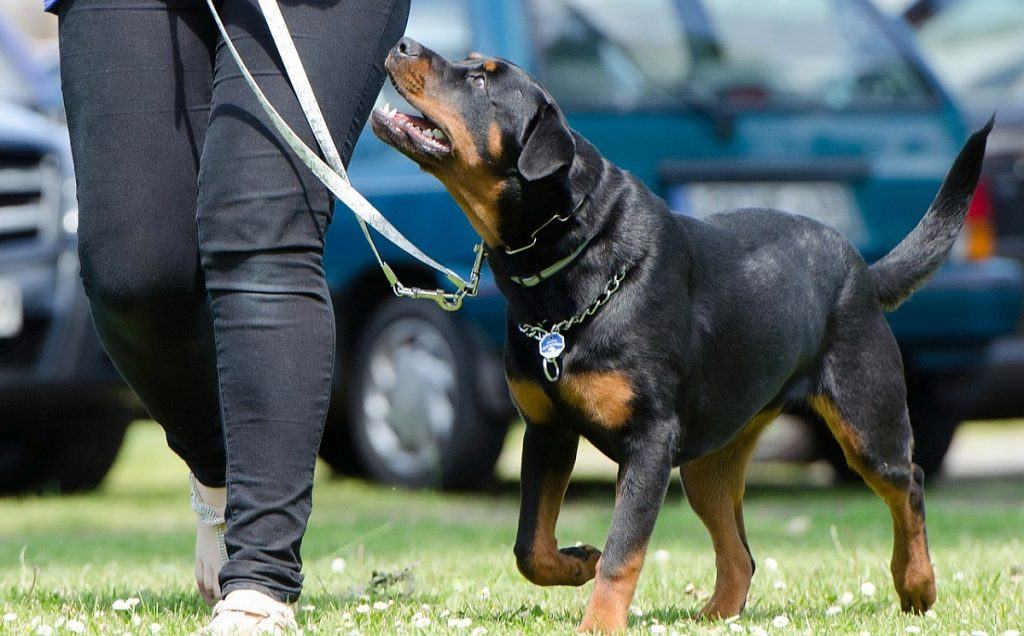
Types Of Dog Training Commands
You’ll certainly want to teach your pet a few basic dog obedience commands, but you may also want to teach him a few advanced dog commands and tricks too. The extent to which you train your dog is your decision.
However, you’ll definitely want your dog to master the basic verbal commands that allow you to control your dog’s movement and his basic interactions with the environment.
If you’re interested in impressing your friends or making the most out of a particularly smart dog, the more advanced dog commands might appeal to you. Some people even make a hobby out of teaching their dog new tricks.
There are two basic types of obedience commands you can use with your dog: verbal commands and hand signals (you can also train your dog to respond to other types of audible stimuli, such as a whistle).
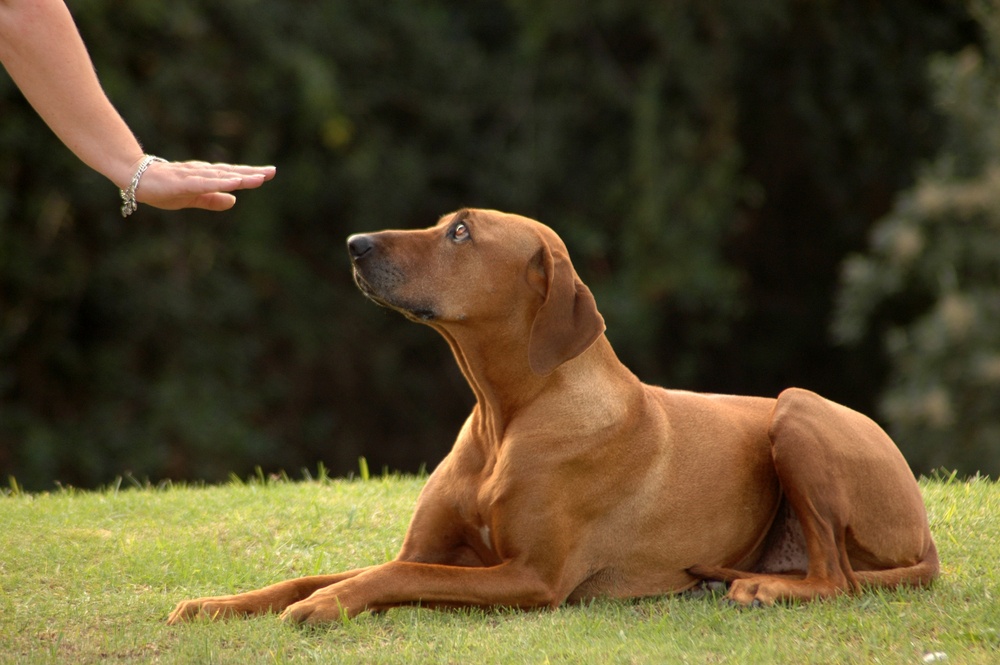
Hand Signals for Dogs
Hand commands for dogs are a useful way to communicate your desires to your dog in situations where verbal commands may be unsuitable, such as during hunting. They are also helpful for controlling your dog in loud environments or when he is far away.
Hand signals require your dog’s attention to be trained on you before they are receptive to the command, unlike in verbal commands.
If you plan on making extensive use of hand signals with your dog, it’s probably a good idea to teach your dog to have the habit of looking at you frequently. For every verbal command, there’s a corresponding hand signal that accomplishes the same thing.
Just remember that dogs aren’t as attuned to human hands as they are to human voices or faces. Accordingly, you’ll need to use good technique and remain patient during the training process.
Your pup will use your facial cues to guide their action in combination with your hand signals. As your dog hand commands become more familiar with your dog, you can phase out your facial communication.
The Deaf Dogs Education Action Fund is a great resource for training your dog in hand signals, even if your dog isn’t deaf.
Verbal Dog Commands
Verbal dog commands are audible messages that instruct your dog to exhibit a given behavior. And unlike hand signals, verbal commands can work even when your dog isn’t looking at you.
Verbal cues carry a wealth of information, including tone as well as volume. This provides your dog with multiple channels through which he can determine your intent.
It’ll also be easier for people who aren’t the dog’s primary master to deliver verbal commands correctly than with hand signals.
When training your dog in verbal cues, you need to take note of these additional channels, though.
Your dog may not know that your sharp tone is a result of being irritated by a parking ticket or something other than your dog’s behavior, and may feel bad as a result through no fault of its own. Mixed messages are counterproductive to the training process.
Dog Training Commands List
Some of the most common dog training commands are listed below. Several of the commands induce basic dog obedience, while others are more advanced and primarily taught for entertainment value.
Below’s list of 28 dog commands is in rough order of importance:
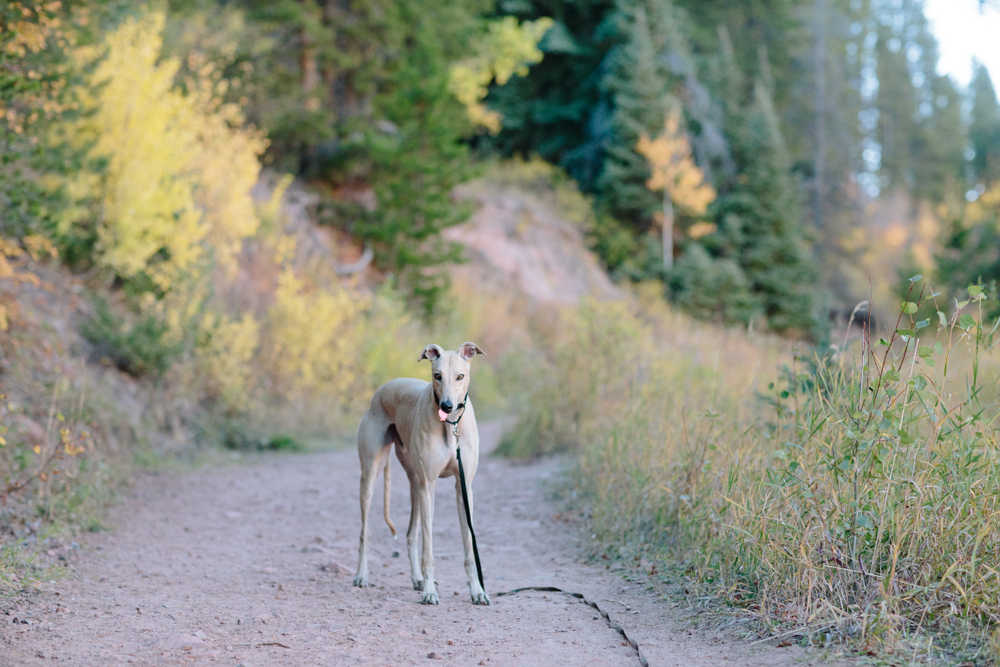
1. “Come” Command
“Come” is the single most important basic dog command to teach dogs. However, it can be bizarrely difficult to teach if your dog is clingy or if there’s a distraction while they’re trying to learn the command. Having an extra-long lead helps.
Let your dog run wherever it wants on the long lead — and maybe incentivize it to run far away by throwing a treat if he’s clingy.
A gentle tug on the lead while saying “come” should be enough to get your dog to understand what you want, and a treat waiting for him at the end of the leash will keep your dog coming back for more.
Eventually, you’ll be able to remove the lead.
2. “No” Command
“No” is another essential dog command that you must teach your dog. However, most dogs will learn “no” without any formal training — they’ll simply learn from your tone and facial expression.
If you’re having trouble with teaching “no” this way, tugging on your dog’s leash and forbidding him from performing the action you want to stop will also work.
Don’t use treats to teach your dog the “no” command, as this may confuse your canine.
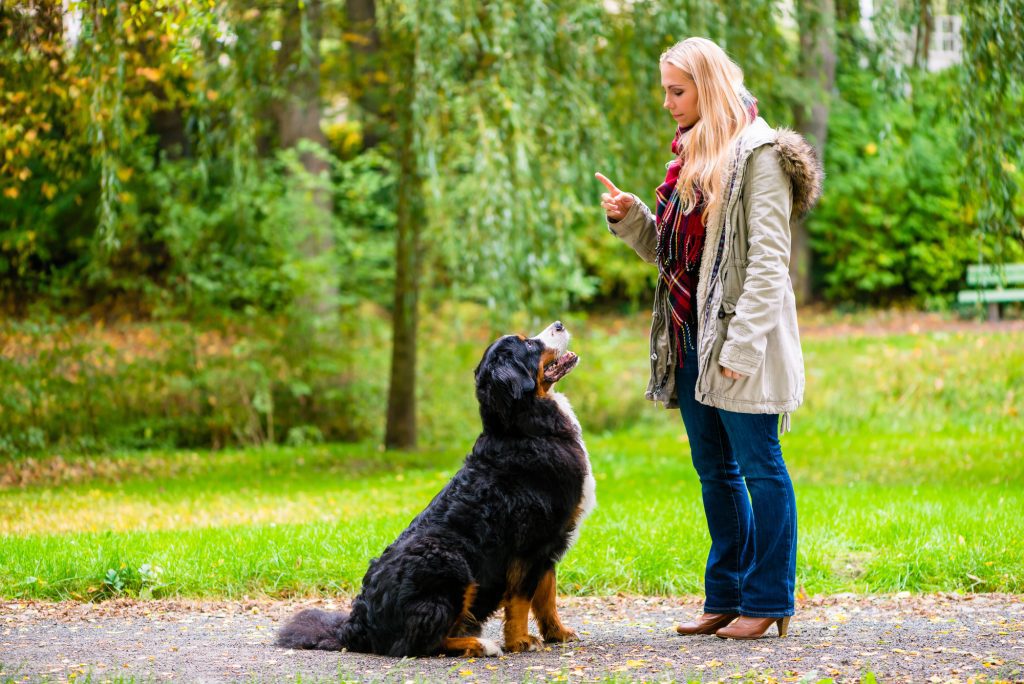
3. “Sit” Command
Sit is one of the first few dog obedience commands that you’ll want to teach your puppy after the bare basics. Sitting is essential in establishing the training relationship further, as it can be an excellent introduction to a training session or a closer after a tough session.
Don’t try to force your dog to sit by pushing down on his haunches. Instead, step toward your dog and lean over him a bit. Most dogs will try to keep eye contact, which will cause their head to go up and their rear end to drop to the floor.
4. “Down” Command
If you plan on having guests over, “down” (or “lay”) is an invaluable dog command. A good method for teaching “down” is to have him sit and then “lure” him toward the ground by holding a treat down on the ground a foot or two in front of him. Don’t try to force him to the ground. Once he lays down properly, give him the treat.
For some owners, “sit” may be sufficient to take the place of “down.”
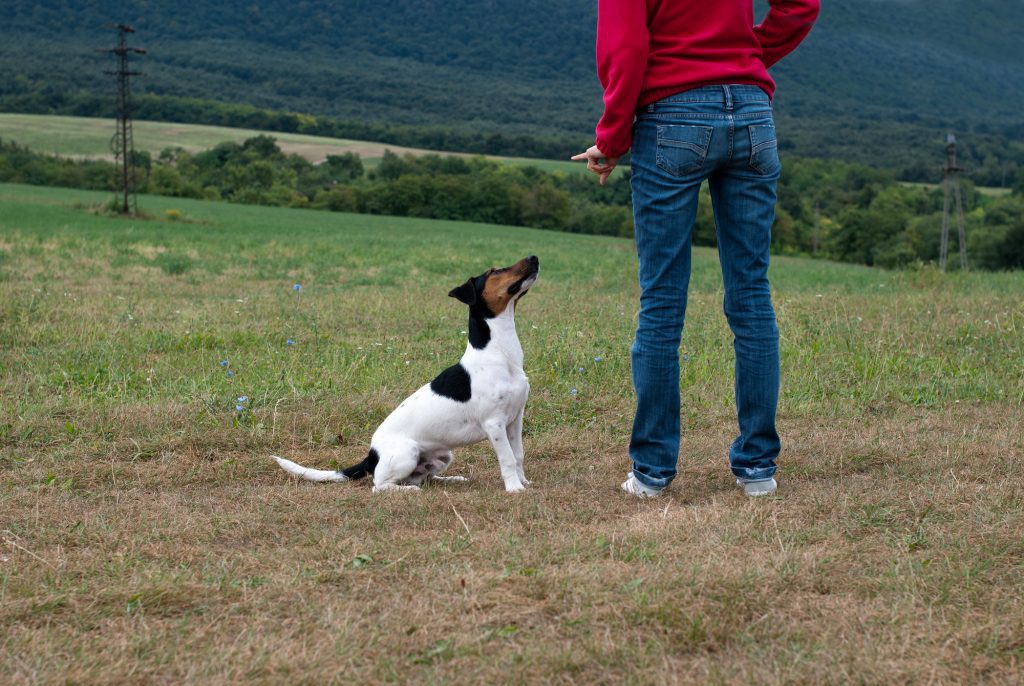
5. “Stay” Command
To teach your dog to stay, begin by having your dog sit. Then, walk away while keeping your eyes locked on your dog’s while saying “stay.”If your dog gets up to follow you—as he probably will—tell your dog to sit, then again to stay.
Hopefully, your dog will stop following you, sit down, and stay put—thus successfully completing the training command. More training will be needed for longer distances and un-learning the “sit” component of stay.
6. “Leave It” Command
“Leave It” is a dog command that your dog will need to learn for its safety. To best teach “leave it,” you’ll need to pick something that’s normally a treat—but not a treat that’s liked very much—and teach your dog to ignore it. Celery is often a good tool for teaching this command, as few dogs seem to enjoy it.
Drop the object on the floor near your dog, and ensure that your dog is paying attention to it. At this point, tell your dog “Leave it!” and cover the object with your hand or foot. Your dog will probably gently try to get around you and access the item, but don’t let him.
Eventually, he’ll get bored of trying and stop paying attention to it—success.
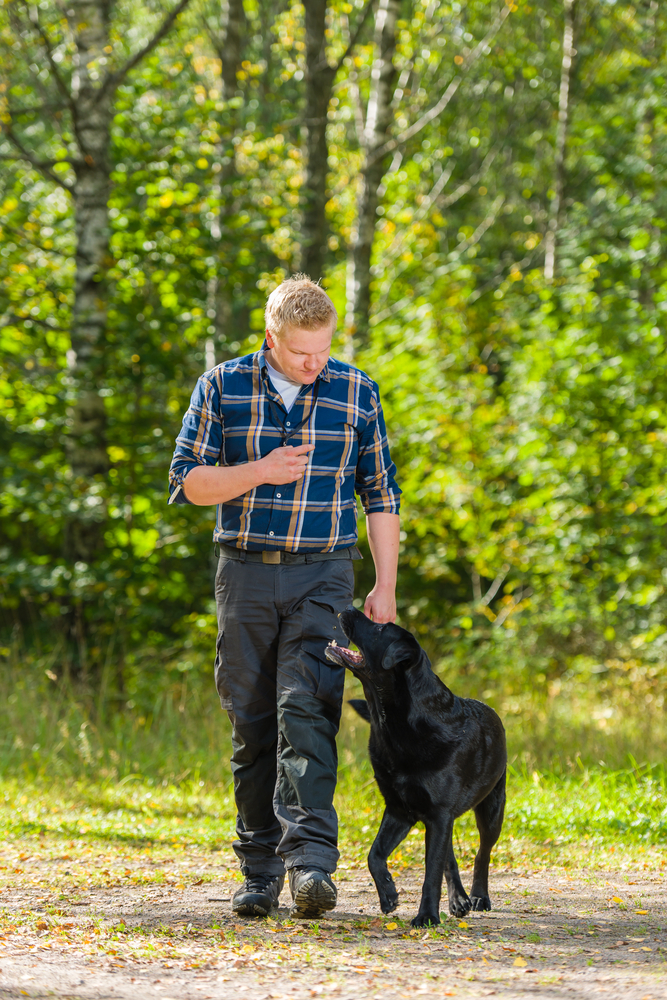
7. “Heel” Command
To teach “heel,” stand with your dog at your leg facing in the same direction as you. Say “heel,” and take a few steps forward. If your dog follows in lockstep, give him a reward. Keep building on longer and longer distances.
8. “Wait” Command
The line between “wait” and “stay” may be a bit blurry, but the method of teaching can be the same as either “stay” or “leave it,” depending on how you choose to do it. The idea is to get your dog to stop its desired actions until you give it the okay.
9. “Okay” Command
With “wait” comes “okay.” Okay indicates that your dog can proceed with its original intent. Your dog should be able to pick up “okay” based off of your tone and facial expression without much extra help.

10. “Release” Command
“Release” tells your dog to relax his mouth in a more general way than “Drop it,” and the teaching method is much the same with one difference: You want to keep your hand on your dog’s toy while you say “release.”
11. “Take It” Command
“Take it” is a fairly easy command for dogs. Simply hold a favorite toy near your dog’s mouth and instruct him to “take it”. Reward him with praise and a treat when he complies.
If you want to get fancy, teach your dog to associate “take it” with the object that you’re pointing at or that your dog covets.
12. “Bring It” Command
“Bring it” is harder than “take it” for obvious reasons, but combining “take it” with “come” should get you there. “Bring it” is a command easiest to teach dogs that have a strong retrieving instinct.
13. “Eliminate” Command
“Eliminate” instructs your dog to urinate or defecate on command. This is a useful dog command, but it can be tricky to teach. It also requires a bit of luck regarding the timing.
Just begin by using the eliminate command when you take your dog out to go to the bathroom, and offer plenty of praise (and a treat, if possible) once he takes care of business.
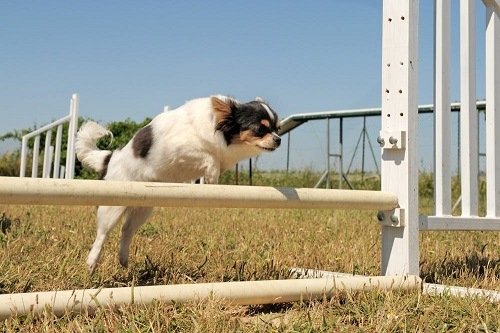
14. “Leap” Command
“Leap” is easy to teach to your dog by combining “stay” and “come” with some prop obstacles to put in between you and your dog. Prompt your dog to “leap” while gently lifting when they realize they can’t complete “come” due to the obstacles you placed.
15. “Go” (To A Place) Command
“Go” requires your dog to understand that your pointed finger or verbal cues refer to a certain place. The basic technique for teaching “go” involves putting treats at a given location, making your dog wait attentively, then directing them toward the location with the treat.
16. “Spin” Command
Teaching “spin” is as easy as holding a treat above your dog, and spinning it around him in a wide arc. Once he complies, give him praise and a treat. Also, you’ll want to use the “spin” command to help him associate the command with the behavior.
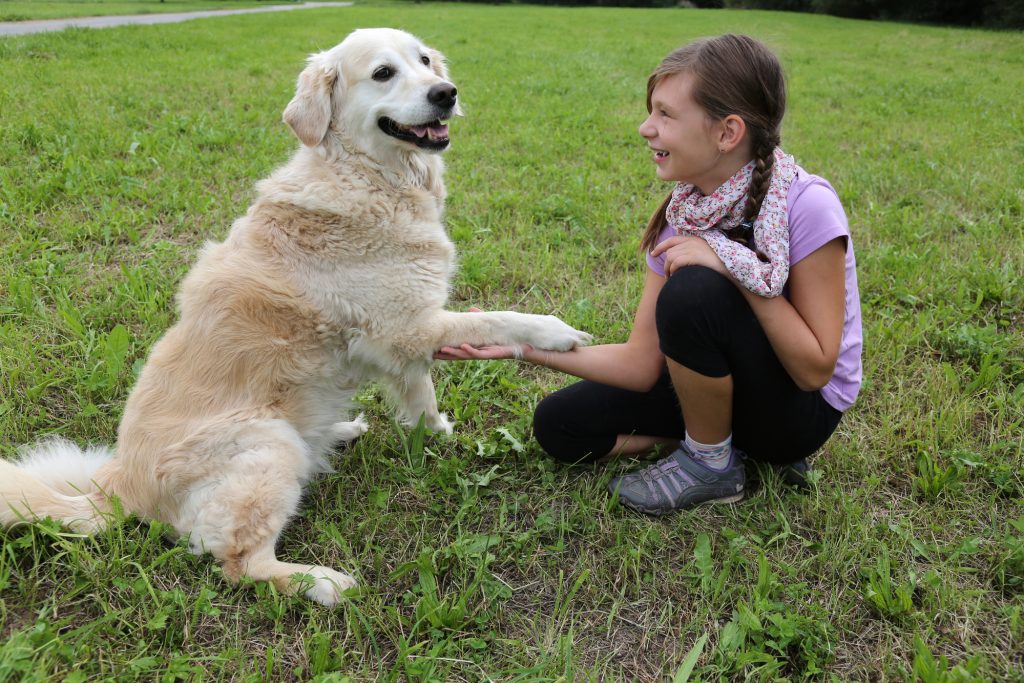
17. “Shake” Command
“Shake” is a cute trick that you can teach after “sit” quite easily. Teach “shake” by using a verbal cue and a little physical guidance of your dog’s paw to meet your other hand.
18. “Roll Over” Command
“Roll over” is a dog trick that can be tough to teach because it’s difficult to physically guide your dog through the motion of rolling over. Start with your dog lying down, but upright.
Using a treat near your dog’s nose, guide your dog’s gaze from left to right, gently helping them to flop over onto their side to follow the treat as it passes beyond their field of view.
Next, help your dog to roll over such that they’re still tracing the treat, and deliver your verbal cue. Be sure to deliver the treat after he complies with the command.
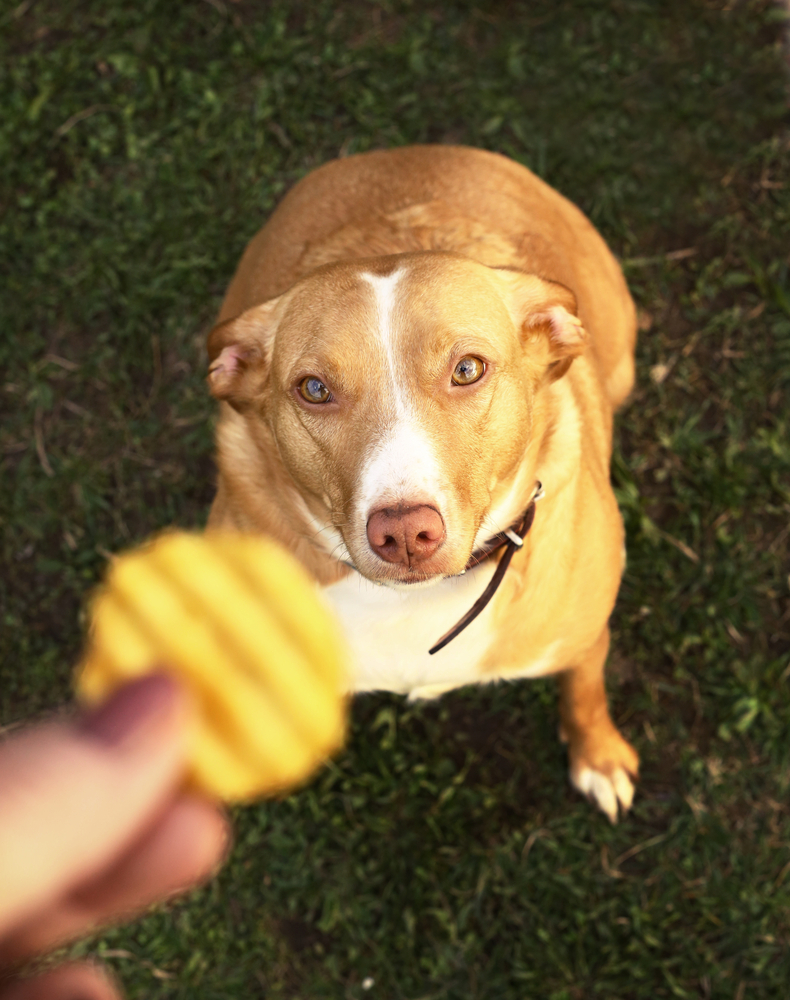
19. “Beg” Command
To teach “beg,” get your dog to chase a treat that’s close to its nose while in the sitting position. Then, get your dog to chase the treat even if it’s vertical.
20. “Speak” Command
“Speak” or “bark” is also a trick that’s difficult to teach sometimes. In general, you want to find a way to get your dog very excited—maybe by wiggling a toy around—then use that as a way to get him to bark.
21. “Find It” Command
“Find it” is an advanced dog command which is hard to teach for items other than treats or toys.
To teach your dog this command, have your dog sit in a comfortable location. Then show him his toy or a treat. Have him remain in place, while you go and place the treat somewhere in the room. Once the treat is placed, give the “find it” command and reward him once he goes and gets the treat.
Over time, you’ll want to gradually move the treat farther and farther from your dog, and eventually start placing it in places that your dog can’t see.
Helping your dog by pointing and the “go” command will help the training process along.

22. “Catch” Command
Most dogs won’t need any help to learn “catch,” but if yours does, try gently lobbing treats towards his nose while offering the verbal cue—but grab the treats off the floor if your dog doesn’t nip them up mid-air. The trick is to teach him that if he must catch the treat in the air to eat it.
23. “Count” Command
Teaching your dog to bark a certain number of times is tough, but think of it as a process of getting your dog to stop barking after a certain nonverbal cue — in this case, the cue is that the number of barks is equal to the number of objects.
Add a verbal cue after stopping him from barking at each successive number of times to teach your dog each number individually and have his “count” command function fully.
24. “Bow” Command
Bowing, for a dog, involves bringing the dog’s chest to the ground while leaving its rear end in the air. Using the same dog body guiding principles from teaching “down” should be sufficient.

25. “Lights” Command
It might come in handy to have your dog understand how to turn off the lights on command. “Lights” is quite complicated, and requires your dog to know “leap,” “touch,” and “look.” First, get your dog to understand that it’s valid to leap up and touch a spot on the wall.
Then, get your dog’s attention, and give them the verbal cue “lights” while you turn off and on the light.
Finally, introduce “leap” and “touch” to your dog, while pointing at the switch while providing the verbal cue “lights” at the end.
You will probably have to teach your dog that “lights” is a concept which refers to the light switches on the walls and not just any old spot on the wall.
If your dog isn’t picking up on the shape of the light switch in rooms other than where he first learned, you can probably just teach him individually on each light switch in each room, and he’ll figure it out.
Be sure to give your dog plenty of practice with this one, and a big reward for getting it right.
26. “Crawl” Command
“Crawl” combines “down” with “come” and should be relatively easy to teach to your dog with a little physical guidance. Remember that it’s pretty tiring for dogs to crawl around because it’s not a natural posture for them.

Puppy Training Commands
Puppy training commands are a special subset of general dog training commands. Puppy commands are special because it’s a bit more frustrating and a bit more limited than training a grown dog. But it is extremely important to begin training dogs from a young age.
In actuality, many of the commands that you’ll want to teach your puppy are more like habits. Thankfully, the method of teaching doesn’t change.
27. “Pay Attention” Command
The very first command or habit that you’ll need to teach your puppy is to pay attention when you call his name.
Your dog will likely learn to respond to his name with time, but you’ll have better luck by formally teaching your puppy to respond to his name.
While teaching this basic response, make sure that you’re not too narrow with the exact action, which is the exact opposite of everything else you’ve read here so far. You want your dog to respond to his name being called in a natural way, instead of doing so in a robotic fashion.
Calling your dog’s name should cause him to direct his attention toward you, at which point you should acknowledge that you are indeed paying attention to him. Once you’ve taught your dog to respond to his name, the next step will be housebreaking.
The specifics of your living situation may vary the exact habit that you’re interested in teaching, but a good second command to teach a puppy is to hold their bathroom needs until they’re in the right area— somewhere outside.
As always, positive reinforcement is key when it comes to housebreaking your puppy. Lucky timing is also your friend.
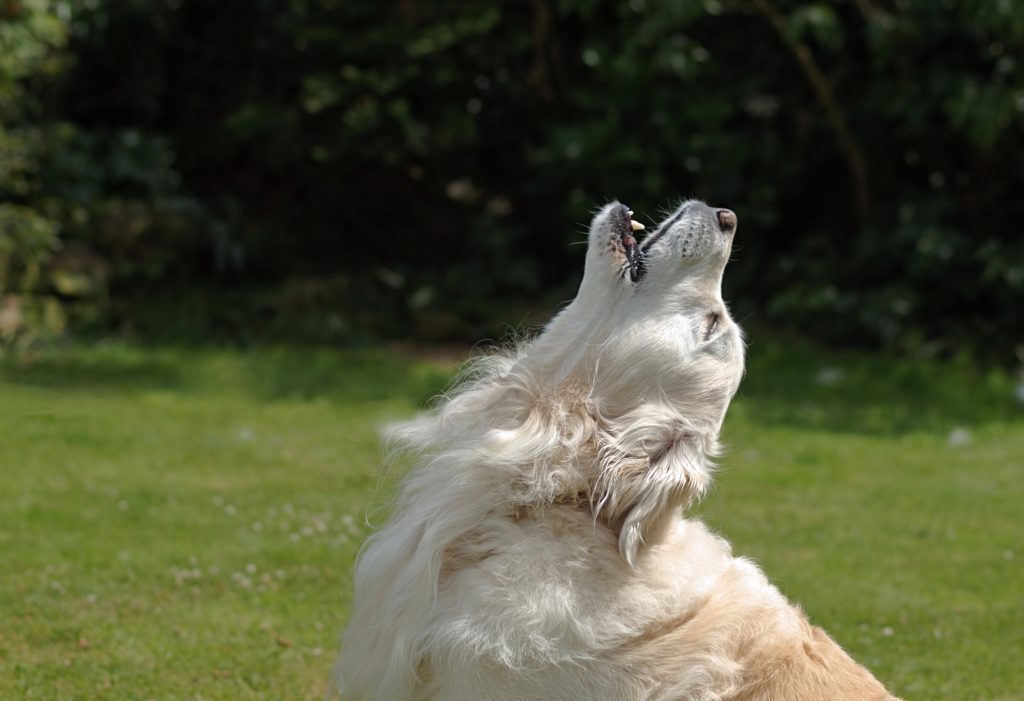
28. “Hush” Command
Once you’ve housebroken your new puppy, you’ll also probably want to teach him to not bark incessantly or out of turn.
While it’s possible to use the “no” command for this purpose, realistically the “hush” command is a better choice than “no” because it’s more focused.
Though it may seem aggressive, gently holding your puppy’s mouth shut while saying “shush” is an effective way of teaching the trick because it’s difficult to set up a positive reward for not barking when there’s an impulse.
Just be sure not to shush your puppy a hundred percent of the time— barking is a totally essential element of dog-human communication, and you don’t want to deny your dog its voice.
Yorumlar
Yorum Gönder